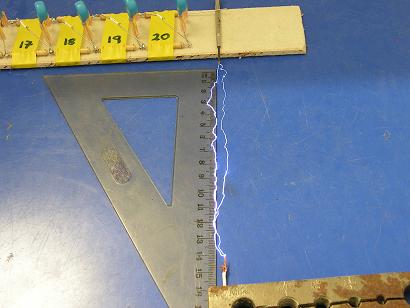On that page I stumbled across the Marx generator. The Marx generator is a method of generating a high voltage pulse. It works by charging a number of capacitors in parallel (through resistors) and discharging them in series (through spark gaps).
This page from Penguins Lab has a good description and photos. Unfortunately, he does not specify where he obtained the capacitors from. A cursory search with Google didn’t yield positive results. I think it would be interesting to build one of these with a couple of hundred stages instead of twenty.

The question becomes one of where to get the necessary components, and what to use as a support to build it on because few things are effective insulators when you’re talking several megavolts.
Also, this unit used 1 NF 20 KV capacitors:

The resulting unit takes approximately two seconds to charge and produces a relatively weak spark. I think I would like to use larger capacitor values so the resulting spark would be higher current and not so weak, lower value resistors and a higher current source so the charging of someone larger capacitors wouldn’t take forever.
Dealing with higher currents on the input side of coarse means you need to be real cautious. The amount of current you’re going to get from a computer monitor flyback like the setup shown on the Penguins Lab page is trivial and while capable of providing some physical pain, is not sufficient to be lethal and the only real injury threat is what you might smack when you rapidly withdraw your hand after getting zapped. Neither does the amount of energy stored in a 1NF capacitor represent a significant hazard but upscaling would change that.
Still, to scale this up to the megavolt range and use larger capacitors, if they could be afforded, is hard to resist.
